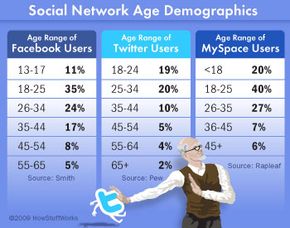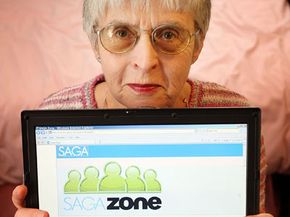Ask teens what their greatest fear is, and chances are, they'll say, "my parents joining Facebook."
What used to be junior high school nonsense is now bleeding all the way into the baby boomer generation. Since 2005, the number of adults using social networking Web sites has more than quadrupled -- from 8 percent in 2005 to 35 percent in 2008 [source: Pew]. In fact, on Facebook, a quickly growing demographic is the 35 years and older age group [source: Facebook]. The fastest growing demographic on Facebook is women 55 years and older. In the span of four months, this user base grew by a whopping 175 percent [source: Smith].
Advertisement
Twitter is also gaining adults, with 20 percent of its users in the 25 to 34 age range [source: Pew]. On the other hand, social networking site MySpace tends to attract greater numbers of younger people and teens, making it a desirable ad market for that age range [source: Stelter et al].
As you can see from the graph, the ages of the users on these Web sites varies, and relatively youthful people still tend to dominate the scene. But older users are increasing. And, really -- should there be any reason for an age cap on social networking? As long as you're getting value from it and understand how to use it, social networking is appropriate for just about any age.
Let's take a look at how the various age groups behave online. Does grandma use social networking sites differently than granddaughter?
Advertisement



